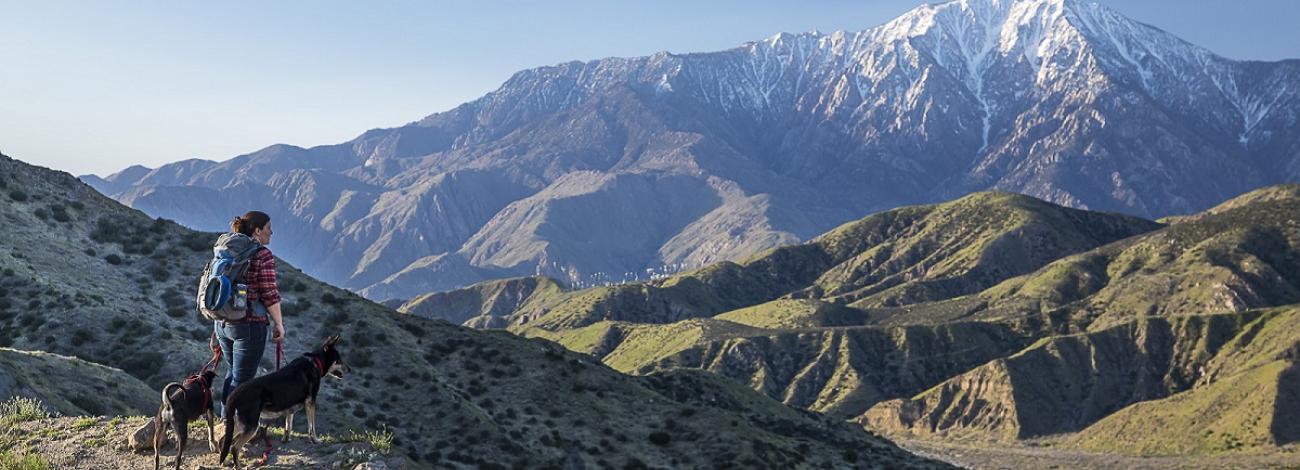
Hiking on Public Lands
BLM-managed lands offer numerous opportunities for hiking ranging from small foot paths through untrammeled wilderness to National Historic Trails with developed trail heads and interpretation centers. No matter what type of experience you are looking for, you can find it on BLM-managed lands. Dogs are welcome on most BLM-managed trails. Please check the trail website or call the local BLM field office for specific leash policies.
Please stay on established paths and properly dispose of your trash and human/dog waste. Additionally, many hiking locations are adjacent to areas of outstanding cultural heritage. If you encounter rock art, pueblo homes, or other cultural artifacts, please help us Respect and Protect this amazing heritage.
Safety Tips
- Respect and be cautious of local wildlife. Bears, mountain lions, coyotes, and venomous creatures such as rattlesnakes and bees are common in many areas.
- When encountering wildlife, maintain your distance and remain quiet. Teach children not to pick up, chase, or approach animals. Keep pets under control.
- Bring plenty of water. Extreme heat conditions are typical during summer months.
- Severe storms with lightning and flash-flooding may occur. Always stay out of washes and seek shelter if lightning occurs.
- Please use existing trails and respect private land signs and fences
Right of Way
Hikers
- Hikers should yield to equestrians. If possible, step to the downhill side of the trail and avoid making sudden movements or loud noises that might startle the horse.
- When encountering another hiker, the hiker walking downhill must yield to the hiker walking uphill.
Hikers with Dogs
- Hikers with dogs should yield to all other trail users.
- While leashes are not required on all trails, you should keep your dog close and under control when passing children, horses or other dogs. Please check the trail website or call the local BLM field office for leash policy.
E-Bikes and Mountain Bikes
- Cyclists must yield to both hikers and horses. Cyclists should wait until the horse fully passes before continuing.
- When encountering another cyclist, yield to the rider moving uphill.
Equestrians
- Equestrians and their horses are the largest trail users and can be the most unpredictable. Communication with hikers and cyclists is key to determine who should yield in uncertain trail conditions. This is especially important for cyclist approaching from behind at a greater speed. Use clear communication with other trail users to avoid collision and startling horses.
- When encountering another equestrian, yield to the rider moving uphill.
Report Crimes
Please help preserve our heritage. Treat cultural sites with respect. Do not touch petroglyphs or remove artifacts. Report crimes to resources including vandalism, dumping and suspicious activity at 1-800-637-9152.
